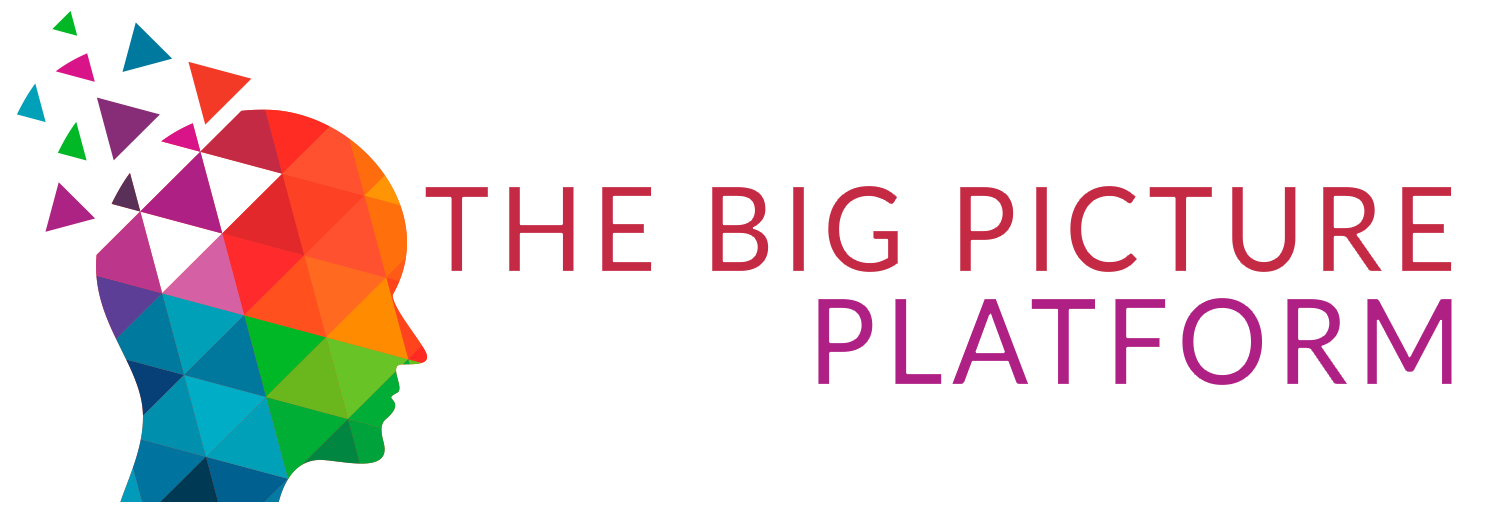Smart Cities for All
Dr. Evangelo Damigos; PhD | Head of Digital Futures Research Desk
- Competitive Differentiation
- Sustainable Growth and Tech Trends
Publication | Update: Sep 2020

The Smart Cities for All global initiative surveyed more than 250 experts around the world and found that three-fifths of global experts claimed that today’s smart cities are failing persons with disabilities because technology solutions are not designed to be accessible and inclusive.
Those same experts saw great potential for existing and emerging technologies like mobile, artificial intelligence, and augmented reality, to help close the enormous digital divide in cities.
“Smart cities must also be inclusive cities,” said Mike Zeto, vice president and general manager of smart cities, AT&T. “We’re working with Smart Cities for All to help ensure that as more and more cities implement smart city strategies, they can do so with inclusion in mind from the very start. This project builds upon our collaboration with G3ict and our commitment to accessibility and creating inclusive experiences for everyone.”
The life span of urban infrastructure typically ranges from 30 -100 years, so the choices that we make now in how to build these sustainable cities will resonate over centuries. Future-proofing of cities is equally important, ensuring that new infrastructure is built to be resilient to changes in technology, emission standards, and potential climate change risks such as sea-level rises and changes in weather patterns.
AT&T, in collaboration with Business for Social Responsibility, G3ict and World Enabled, launched a white paper, “Smart Cities for All: A Vision for an Inclusive, Accessible Urban Future.” The report aims to highlight the potential for smart city technology to enable benefits for people who are aging and people who are living with disabilities, and to indicate suggested practices for building more inclusive smart cities. .
It maps the opportunities for smart city technologies to benefit all communities, as well as the keys to success to ensure these technologies advance more equitable and positive outcomes for people who are aging and people living with disabilities.
Smart city technologies will fundamentally alter city infrastructure and the ways city services are deployed. As these technologies are only now being tested and implemented, city officials will now have a critical opportunity to ensure the considerations of aging communities and communities living with disabilities are respected from the outset.

A Framework for Smart City Solutions for Aging & Accessibility. The identified “smart city capabilities” reflect AT&T’s categories of smart city products and services.
The report identifies four keys to success it recommends city officials use to ensure digital inclusion:
- Design for Inclusion: To quote the guiding principles of a recent framework for state governments: “Disability is a natural part of the human experience that in no way diminishes one’s right to fully participate in all aspects of community life” Universal Design and protections against privacy abuses should be front and center as cities consider deploying these technologies. Universal Design criteria will ensure technologies are usable by all citizens. Additionally, there are opportunities for cities to embed smart city solutions that will leapfrog barriers to adoption. Enhanced digital security and privacy protections will be a fundamental requirement as these new technologies will play a vital role in the lives of citizens – and may be directly responsible for the health and wellbeing of the most vulnerable communities. With proper planning, system designs for smart city infrastructure can ideally detect security concerns and have alerting and remediation capabilities for the broader public.
- Engage Partners and Stakeholders: Smart city technologies must adopt a multi-stakeholder engagement process to ensure sustainable financing of these innovations and citizens’ full participation in any projects. Partnerships with the private sector will help co-create cost-effective and viable solutions that leverage companies’ expertise in designing for inclusivity. Engaging aging communities and those living with disabilities in the planning of smart cities is critical to ensuring these solutions align with citizen needs and expectations.
- Promote Adoption of Technology: City officials must work to bridge the digital divide that often prevents people who are aging or living with disabilities to access the full benefits of technology. Officials must work to empower these communities to participate in smart cities by increasing access both to broadband connectivity and connected devices, as well as the necessary technology education to fully utilize these benefits. Without
addressing these issues, cities risk perpetuating disparities that keep these communities from accessing smart technologies. - Foster the Entrepreneur Ecosystem: Many of the applications and solutions that will benefit these communities will arise from social entrepreneurs and innovators of all ages. Beyond enhancing the accessibility of city infrastructure and services, a key role for city government is to enable this social innovation to flourish and direct entrepreneurship to benefit these communities. Publicly funded incubators and open data portals are some of the many ways city governments can foster citizen solutions.
Smart Citizen Engagement
A city is not smart unless it ensures that its citizens are at the core of their urban strategies
The above examples highlight technology developments that are occurring in a number of different sectors. Integrating all these systems into a smart city strategy is not easy. However it is also important to note that a city is not smart unless it ensures that its citizens are at the core of their urban strategies. As shown in our chapter on social infrastructure, big data can be used to improve social infrastructure in a city and ensure that the investments made by local or central governments are targeted correctly at projects that benefit citizens.
“Innovations in machine learning, natural language processing, computer vision, and cloud computing are already improving employment, education and health outcomes for persons with disabilities and older persons,” said Dr Victor Pineda, president of World Enabled. “We want to ensure tomorrow’s technology leaves no one behind.”
The use of a public health calculator developed by Uppsala University has helped public entities tailor their investment in public health efficiently and where investments are actually needed while the government of New Zealand has used their data to help target services that meet the needs of their citizens.
Governments should also engage their citizens in the development of smart cities.
Developing online portals or platforms for citizens to engage with government, developers, etc. can ensure that such projects are targeted for the needs of their citizens and not just for the sake of being smarter.
Download the white paper: Smart Cities for All: A Vision for an Inclusive, Accessible Urban Future
 Digital Themes: Competitive Differentiation, Sustainable Growth and Tech Trends
Digital Themes: Competitive Differentiation, Sustainable Growth and Tech Trends

HTML
 Access Rights | Content Availability:
Access Rights | Content Availability: 


Objectives and Study Scope
This study has assimilated knowledge and insight from business and subject-matter experts, and from a broad spectrum of market initiatives. Building on this research, the objectives of this market research report is to provide actionable intelligence on opportunities alongside the market size of various segments, as well as fact-based information on key factors influencing the market- growth drivers, industry-specific challenges and other critical issues in terms of detailed analysis and impact.
The report in its entirety provides a comprehensive overview of the current global condition, as well as notable opportunities and challenges.
The analysis reflects market size, latest trends, growth drivers, threats, opportunities, as well as key market segments. The study addresses market dynamics in several geographic segments along with market analysis for the current market environment and future scenario over the forecast period.
The report also segments the market into various categories based on the product, end user, application, type, and region.
The report also studies various growth drivers and restraints impacting the market, plus a comprehensive market and vendor landscape in addition to a SWOT analysis of the key players.
This analysis also examines the competitive landscape within each market. Market factors are assessed by examining barriers to entry and market opportunities. Strategies adopted by key players including recent developments, new product launches, merger and acquisitions, and other insightful updates are provided.
Research Process & Methodology

We leverage extensive primary research, our contact database, knowledge of companies and industry relationships, patent and academic journal searches, and Institutes and University associate links to frame a strong visibility in the markets and technologies we cover.
We draw on available data sources and methods to profile developments. We use computerised data mining methods and analytical techniques, including cluster and regression modelling, to identify patterns from publicly available online information on enterprise web sites.
Historical, qualitative and quantitative information is obtained principally from confidential and proprietary sources, professional network, annual reports, investor relationship presentations, and expert interviews, about key factors, such as recent trends in industry performance and identify factors underlying those trends - drivers, restraints, opportunities, and challenges influencing the growth of the market, for both, the supply and demand sides.
In addition to our own desk research, various secondary sources, such as Hoovers, Dun & Bradstreet, Bloomberg BusinessWeek, Statista, are referred to identify key players in the industry, supply chain and market size, percentage shares, splits, and breakdowns into segments and subsegments with respect to individual growth trends, prospects, and contribution to the total market.
Research Portfolio Sources:
Global Business Reviews, Research Papers, Commentary & Strategy Reports
M&A and Risk Management | Regulation

The future outlook “forecast” is based on a set of statistical methods such as regression analysis, industry specific drivers as well as analyst evaluations, as well as analysis of the trends that influence economic outcomes and business decision making.
The Global Economic Model is covering the political environment, the macroeconomic environment, market opportunities, policy towards free enterprise and competition, policy towards foreign investment, foreign trade and exchange controls, taxes,
financing, the labour market and infrastructure.
We aim update our market forecast to include the latest market developments and trends.
Review of independent forecasts for the main macroeconomic variables by the following organizations provide a holistic overview of the range of alternative opinions:
As a result, the reported forecasts derive from different forecasters and may not represent the view of any one forecaster over the whole of the forecast period. These projections provide an indication of what is, in our view most likely to happen, not what it will definitely happen.
Short- and medium-term forecasts are based on a “demand-side” forecasting framework, under the assumption that supply adjusts to meet demand either directly through changes in output or through the depletion of inventories.
Long-term projections rely on a supply-side framework, in which output is determined by the availability of labour and capital equipment and the growth in productivity.
Long-term growth prospects, are impacted by factors including the workforce capabilities, the openness of the economy to trade, the legal framework, fiscal policy, the degree of government regulation.
Direct contribution to GDP
The method for calculating the direct contribution of an industry to GDP, is to measure its ‘gross value added’ (GVA); that is, to calculate the difference between the industry’s total pretax revenue and its total boughtin costs (costs excluding wages and salaries).
Forecasts of GDP growth: GDP = CN+IN+GS+NEX
GDP growth estimates take into account:

Market Quantification
All relevant markets are quantified utilizing revenue figures for the forecast period. The Compound Annual Growth Rate (CAGR) within each segment is used to measure growth and to extrapolate data when figures are not publicly available.
Revenues
Our market segments reflect major categories and subcategories of the global market, followed by an analysis of statistical data covering national spending and international trade relations and patterns. Market values reflect revenues paid by the final customer / end user to vendors and service providers either directly or through distribution channels, excluding VAT. Local currencies are converted to USD using the yearly average exchange rates of local currencies to the USD for the respective year as provided by the IMF World Economic Outlook Database.
Industry Life Cycle Market Phase
Market phase is determined using factors in the Industry Life Cycle model. The adapted market phase definitions are as follows:

The Global Economic Model
The Global Economic Model brings together macroeconomic and sectoral forecasts for quantifying the key relationships.
The model is a hybrid statistical model that uses macroeconomic variables and inter-industry linkages to forecast sectoral output. The model is used to forecast not just output, but prices, wages, employment and investment. The principal variables driving the industry model are the components of final demand, which directly or indirectly determine the demand facing each industry. However, other macroeconomic assumptions — in particular exchange rates, as well as world commodity prices — also enter into the equation, as well as other industry specific factors that have been or are expected to impact.
Forecasts of GDP growth per capita based on these factors can then be combined with demographic projections to give forecasts for overall GDP growth.
Wherever possible, publicly available data from official sources are used for the latest available year. Qualitative indicators are normalised (on the basis of: Normalised x = (x - Min(x)) / (Max(x) - Min(x)) where Min(x) and Max(x) are, the lowest and highest values for any given indicator respectively) and then aggregated across categories to enable an overall comparison. The normalised value is then transformed into a positive number on a scale of 0 to 100. The weighting assigned to each indicator can be changed to reflect different assumptions about their relative importance.

The principal explanatory variable in each industry’s output equation is the Total Demand variable, encompassing exogenous macroeconomic assumptions, consumer spending and investment, and intermediate demand for goods and services by sectors of the economy for use as inputs in the production of their own goods and services.
Elasticities
Elasticity measures the response of one economic variable to a change in another economic variable, whether the good or service is demanded as an input into a final product or whether it is the final product, and provides insight into the proportional impact of different economic actions and policy decisions.
Demand elasticities measure the change in the quantity demanded of a particular good or service as a result of changes to other economic variables, such as its own price, the price of competing or complementary goods and services, income levels, taxes.
Demand elasticities can be influenced by several factors. Each of these factors, along with the specific characteristics of the product, will interact to determine its overall responsiveness of demand to changes in prices and incomes.
The individual characteristics of a good or service will have an impact, but there are also a number of general factors that will typically affect the sensitivity of demand, such as the availability of substitutes, whereby the elasticity is typically higher the greater the number of available substitutes, as consumers can easily switch between different products.
The degree of necessity. Luxury products and habit forming ones, typically have a higher elasticity.
Proportion of the budget consumed by the item. Products that consume a large portion of the
consumer’s budget tend to have greater elasticity.
Elasticities tend to be greater over the long run because consumers have more time to adjust their behaviour.
Finally, if the product or service is an input into a final product then the price elasticity will depend on the price elasticity of the final product, its cost share in the production costs, and the availability of substitutes for that good or service.
Prices
Prices are also forecast using an input-output framework. Input costs have two components; labour costs are driven by wages, while intermediate costs are computed as an input-output weighted aggregate of input sectors’ prices. Employment is a function of output and real sectoral wages, that are forecast as a function of whole economy growth in wages. Investment is forecast as a function of output and aggregate level business investment.




 Industry: Government and Smart Cities
Industry: Government and Smart Cities 
